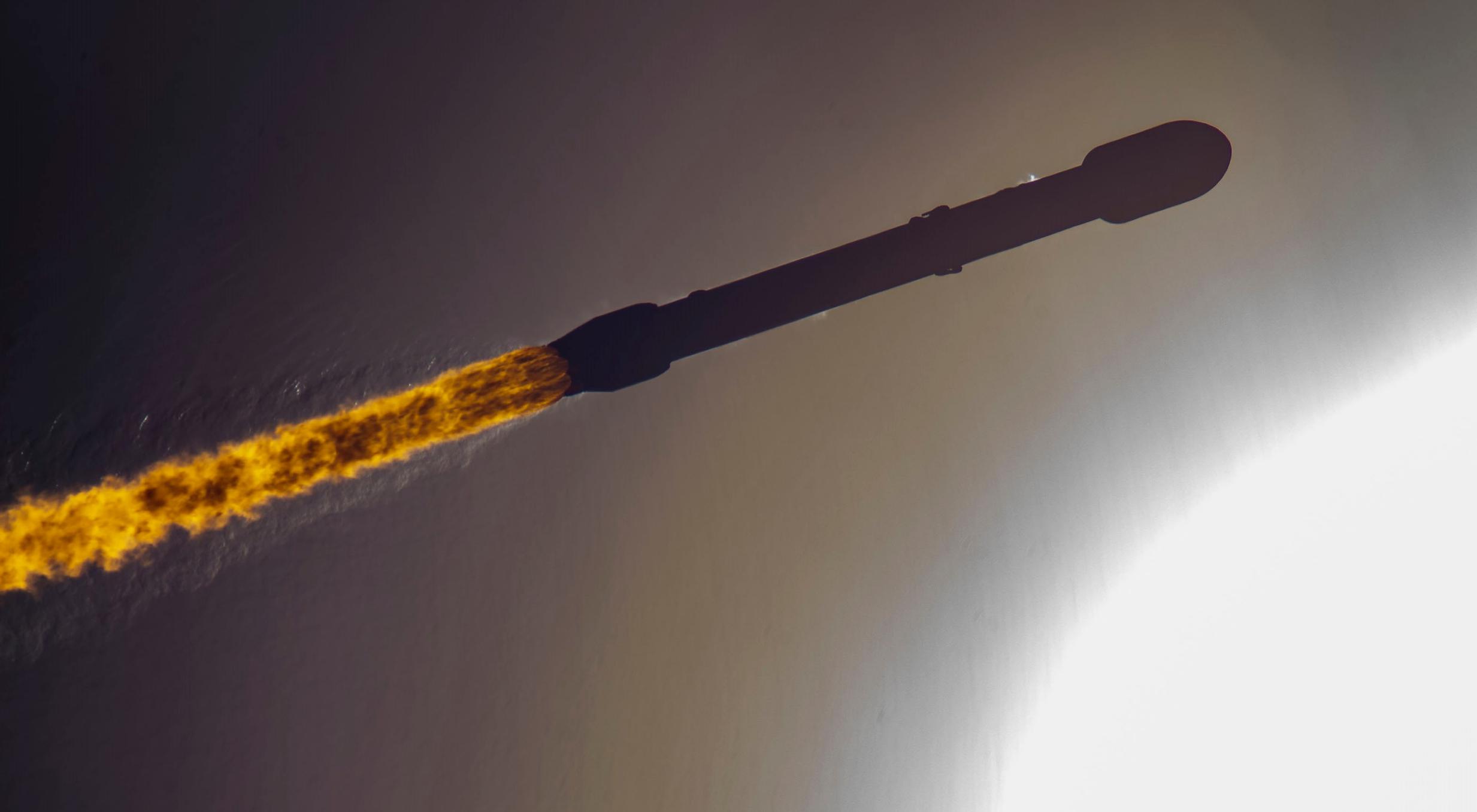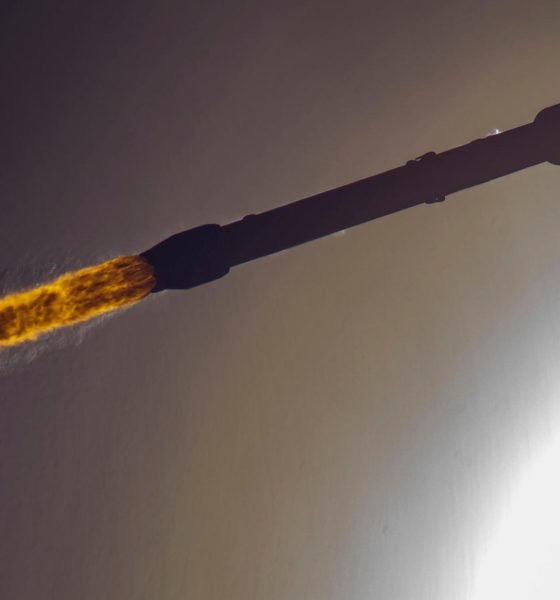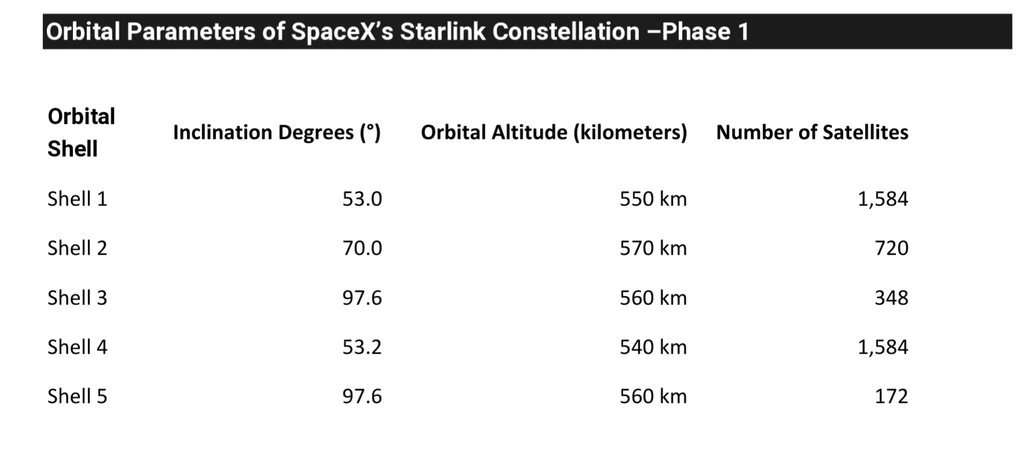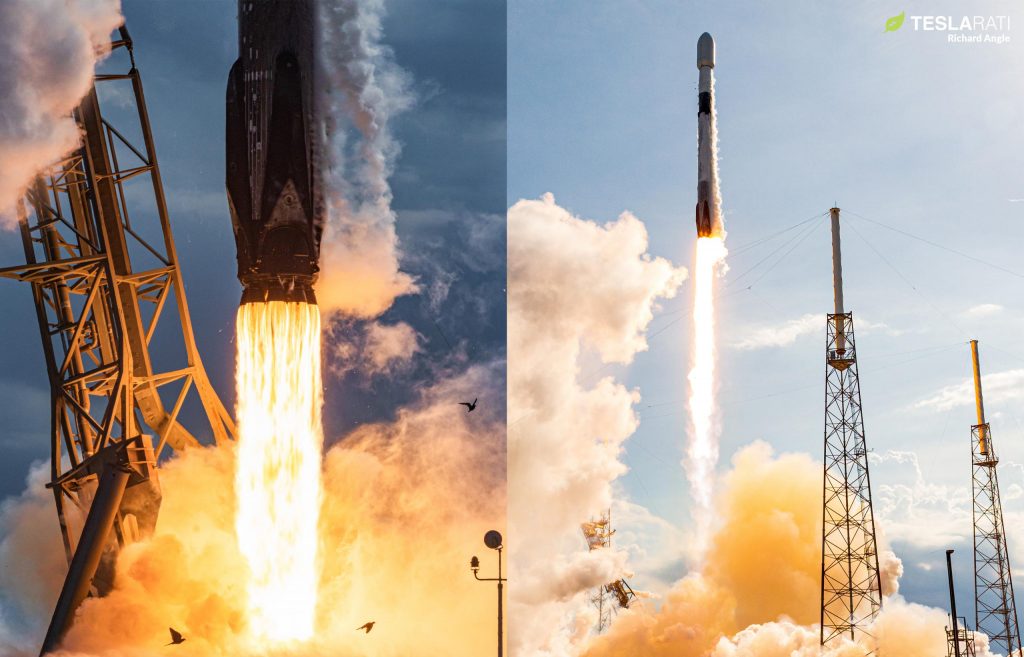

News
SpaceX ready for 31st Starlink launch of 2022
SpaceX is on track to launch its 31st Starlink mission of 2022 later this morning.
No earlier than (NET) 10:50 am EDT (14:50 UTC) on Thursday, October 20th, a Falcon 9 rocket is scheduled to lift off from SpaceX’s Cape Canaveral Air Force Station (CCAFS) LC-40 launch pad with 54 internet satellites in tow. Weighing in at 16.75 tons (~36,900 lb), the batch of Starlink V1.5 satellites is one of just a few left for SpaceX to complete the second of five ‘shells’ that make up its first constellation.
Even before today’s Starlink 4-36 launch, more than two-thirds of the 4408 satellites required to complete the constellation are already in orbit and (by all appearances) working as expected. Of the 3131 working satellites in orbit, approximately 2700 are at their operational altitudes and theoretically capable of serving customers on Earth. Another ~390 satellites are in the process of climbing to their operational orbits. Once they’re done, SpaceX’s first Starlink constellation will be more than two-thirds complete.
The constellation is made up of five orbital ‘shells’ – distinct groups of satellites that share a similar orbital inclination (the angle between the satellite’s orbit and Earth’s equator) and altitude. Two of those shells, known as Group 1 and Group 4, contain 3168 satellites or more than two-thirds of the constellation. They’re nearly identical and focus on Earth’s mid-latitudes, where almost every person (and customer) on Earth resides. Both are almost complete: astrophysicist Jonathan McDowell estimates that 1456 of 1584 possible Group 1 satellites are operational. Group 4 is one launch behind, with about 1405 working satellites in orbit.

In addition to Starlink 4-36, SpaceX has one more Starlink launch (4-31) tentatively scheduled in late October. The company’s November manifest is jam-packed with up to five commercial launches, potentially precluding any additional Starlink launches next month. December could be an even more commercially productive month if just a handful of schedules hold. But there’s a chance that SpaceX will find space to complete two more Starlink launches within the next ten weeks, allowing it to nearly complete Group 4 by the end of the year.
Once #4 is complete, all future launches for SpaceX’s first-generation Starlink constellation will likely head to one of three shells with semi-polar or polar inclinations. Group 2, the largest of the remaining shells with a planned 720 satellites, can be launched from any of SpaceX’s three pads. SpaceX has already launched one batch of Group 2 satellites and will need to complete ~13 more launches to finish the shell. Finally, more than half of Group 3’s 348 satellites have already been launched, but SpaceX has yet to start Group 5 (172 satellites). Both Group 3 and Group 5 will likely be launched out of SpaceX’s California launch pad.

Including an allowance for several dozen on-orbit satellite failures over the same period, SpaceX’s first Starlink constellation thus appears to be about 23 launches away from completion. If SpaceX matches its 2022 cadence in 2023, the entire 4408-satellite constellation could be fully operational before the end of next year. If SpaceX can hit its target of 100 total launches in 2023, the first Starlink constellation could be fully operational months before the end of 2023.
Even with a third of its satellites still on the ground, Starlink is close to an order of magnitude larger than any other constellation in history. Confirming an estimate shared by Teslarati earlier this year, CEO Elon Musk says that SpaceX now owns and operates more than half of all active satellites in orbit less than three years after the company began operational Starlink launches.
Tune in below to watch SpaceX’s 31st Starlink mission and 48th launch this year.

News
Tesla Full Self-Driving v14.2 – Full Review, the Good and the Bad

Tesla rolled out Full Self-Driving version 14.2 yesterday to members of the Early Access Program (EAP). Expectations were high, and Tesla surely delivered.
With the rollout of Tesla FSD v14.2, there were major benchmarks for improvement from the v14.1 suite, which spanned across seven improvements. Our final experience with v14.1 was with v14.1.7, and to be honest, things were good, but it felt like there were a handful of regressions from previous iterations.
While there were improvements in brake stabbing and hesitation, we did experience a few small interventions related to navigation and just overall performance. It was nothing major; there were no critical takeovers that required any major publicity, as they were more or less subjective things that I was not particularly comfortable with. Other drivers might have been more relaxed.
With v14.2 hitting our cars yesterday, there were a handful of things we truly noticed in terms of improvement, most notably the lack of brake stabbing and hesitation, a major complaint with v14.1.x.
However, in a 62-minute drive that was fully recorded, there were a lot of positives, and only one true complaint, which was something we haven’t had issues with in the past.
The Good
Lack of Brake Stabbing and Hesitation
Perhaps the most notable and publicized issue with v14.1.x was the presence of brake stabbing and hesitation. Arriving at intersections was particularly nerve-racking on the previous version simply because of this. At four-way stops, the car would not be assertive enough to take its turn, especially when other vehicles at the same intersection would inch forward or start to move.
This was a major problem.
However, there were no instances of this yesterday on our lengthy drive. It was much more assertive when arriving at these types of scenarios, but was also more patient when FSD knew it was not the car’s turn to proceed.
Can report on v14.2 today there were ZERO instances of break stabbing or hesitation at intersections today
It was a significant improvement from v14.1.x
— TESLARATI (@Teslarati) November 21, 2025
This improvement was the most noticeable throughout the drive, along with fixes in overall smoothness.
Speed Profiles Seem to Be More Reasonable
There were a handful of FSD v14 users who felt as if the loss of a Max Speed setting was a negative. However, these complaints will, in our opinion, begin to subside, especially as things have seemed to be refined quite nicely with v14.2.
Freeway driving is where this is especially noticeable. If it’s traveling too slow, just switch to a faster profile. If it’s too fast, switch to a slower profile. However, the speeds seem to be much more defined with each Speed Profile, which is something that I really find to be a huge advantage. Previously, you could tell the difference in speeds, but not in driving styles. At times, Standard felt a lot like Hurry. Now, you can clearly tell the difference between the two.
It seems as if Tesla made a goal that drivers should be able to tell which Speed Profile is active if it was not shown on the screen. With v14.1.x, this was not necessarily something that could be done. With v14.2, if someone tested me on which Speed Profile was being used, I’m fairly certain I could pick each one.
Better Overall Operation
I felt, at times, especially with v14.1.7, there were some jerky movements. Nothing that was super alarming, but there were times when things just felt a little more finicky than others.
v14.2 feels much smoother overall, with really great decision-making, lane changes that feel second nature, and a great speed of travel. It was a very comfortable ride.
The Bad
Parking
It feels as if there was a slight regression in parking quality, as both times v14.2 pulled into parking spots, I would have felt compelled to adjust manually if I were staying at my destinations. For the sake of testing, at my first destination, I arrived, allowed the car to park, and then left. At the tail-end of testing, I walked inside the store that FSD v14.2 drove me to, so I had to adjust the parking manually.
This was pretty disappointing. Apart from parking at Superchargers, which is always flawless, parking performance is something that needs some attention. The release notes for v14.2. state that parking spot selection and parking quality will improve with future versions.
Any issues with parking on your end? 14.1.7 didn’t have this trouble with parking pic.twitter.com/JPLRO2obUj
— TESLARATI (@Teslarati) November 21, 2025
However, this was truly my only complaint about v14.2.
You can check out our full 62-minute ride-along below:
Elon Musk
SpaceX issues statement on Starship V3 Booster 18 anomaly
The incident unfolded during gas-system pressure testing at the company’s Massey facility in Starbase, Texas.

SpaceX has issued an initial statement about Starship Booster 18’s anomaly early Friday. The incident unfolded during gas-system pressure testing at the company’s Massey facility in Starbase, Texas.
SpaceX’s initial comment
As per SpaceX in a post on its official account on social media platform X, Booster 18 was undergoing gas system pressure tests when the anomaly happened. Despite the nature of the incident, the company emphasized that no propellant was loaded, no engines were installed, and personnel were kept at a safe distance from the booster, resulting in zero injuries.
“Booster 18 suffered an anomaly during gas system pressure testing that we were conducting in advance of structural proof testing. No propellant was on the vehicle, and engines were not yet installed. The teams need time to investigate before we are confident of the cause. No one was injured as we maintain a safe distance for personnel during this type of testing. The site remains clear and we are working plans to safely reenter the site,” SpaceX wrote in its post on X.
Incident and aftermath
Livestream footage from LabPadre showed Booster 18’s lower half crumpling around the liquid oxygen tank area at approximately 4:04 a.m. CT. Subsequent images posted by on-site observers revealed extensive deformation across the booster’s lower structure. Needless to say, spaceflight observers have noted that Booster 18 would likely be a complete loss due to its anomaly.
Booster 18 had rolled out only a day earlier and was one of the first vehicles in the Starship V3 program. The V3 series incorporates structural reinforcements and reliability upgrades intended to prepare Starship for rapid-reuse testing and eventual tower-catch operations. Elon Musk has been optimistic about Starship V3, previously noting on X that the spacecraft might be able to complete initial missions to Mars.
Investor's Corner
Tesla analyst maintains $500 PT, says FSD drives better than humans now
The team also met with Tesla leaders for more than an hour to discuss autonomy, chip development, and upcoming deployment plans.

Tesla (NASDAQ:TSLA) received fresh support from Piper Sandler this week after analysts toured the Fremont Factory and tested the company’s latest Full Self-Driving software. The firm reaffirmed its $500 price target, stating that FSD V14 delivered a notably smooth robotaxi demonstration and may already perform at levels comparable to, if not better than, average human drivers.
The team also met with Tesla leaders for more than an hour to discuss autonomy, chip development, and upcoming deployment plans.
Analysts highlight autonomy progress
During more than 75 minutes of focused discussions, analysts reportedly focused on FSD v14’s updates. Piper Sandler’s team pointed to meaningful strides in perception, object handling, and overall ride smoothness during the robotaxi demo.
The visit also included discussions on updates to Tesla’s in-house chip initiatives, its Optimus program, and the growth of the company’s battery storage business. Analysts noted that Tesla continues refining cost structures and capital expenditure expectations, which are key elements in future margin recovery, as noted in a Yahoo Finance report.
Analyst Alexander Potter noted that “we think FSD is a truly impressive product that is (probably) already better at driving than the average American.” This conclusion was strengthened by what he described as a “flawless robotaxi ride to the hotel.”
Street targets diverge on TSLA
While Piper Sandler stands by its $500 target, it is not the highest estimate on the Street. Wedbush, for one, has a $600 per share price target for TSLA stock.
Other institutions have also weighed in on TSLA stock as of late. HSBC reiterated a Reduce rating with a $131 target, citing a gap between earnings fundamentals and the company’s market value. By contrast, TD Cowen maintained a Buy rating and a $509 target, pointing to strong autonomous driving demonstrations in Austin and the pace of software-driven improvements.
Stifel analysts also lifted their price target for Tesla to $508 per share over the company’s ongoing robotaxi and FSD programs.








